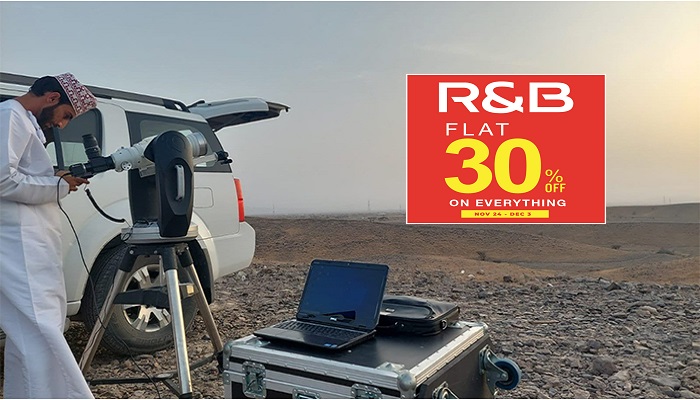
Muscat: With a long history of marine heritage, Oman has the potential to become a key destination for astronomy, astronomical exploration, discoveries and scientific research, according to Muhammad Al Battashi, Chairman of the Studies and Research Committee of the Oman Astronomical Society (OAS).
Astronomy’s association with the Sultanate of Oman goes back to many hundreds of years back. Sailors used the position of the sun to guide their route.
When the sun set at night, sailors used the stars to navigate. Sailors also used their knowledge of the constellations to navigate.
He said: “If we want to describe the Sultanate of Oman in an astronomical way, it is the country of ten thousand solar hours, because in every village there are aflaj, and the age-old water distribution system is calculated by a sundial. Oman was known for its early adoption of astronomy from early times. Farmers and landowners were fully aware of the movement of stars and the time difference between each star and the other. The Omani sailors were well-versed with the navigation through stars and movement of the sun and the moon.”
Al Battashi added: “Despite the glorious history of our sailors using astronomy for travel and judging time, it is time for the government to invest more in this field.
There are a lot of ways to promote astronomy tourism in the Sultanate of Oman. We have a landscape where astronomy lovers from around the world would like to come and enjoy just not the stars but also the country.
The Sultanate of Oman provides a perfect balance for exploring astronomy and the country for people who follow the subject across the world.”
Stargazing camps at Oman mountains in the summer and low lying areas in the interior of Oman provides a great opportunity to promote astro-tourism in Oman. The camping experience is one of its kind as the trips give the opportunity to see the universe through a telescope and look at the night sky.
Oman Astronomical Society also holds special camps for events such as eclipses and super moons.
Al Battashi said: “We have an observatory located in Jabal Shams, which is at a height of 2,980 metres. We can promote the location for stargazers and make it a tourist spot. We should promote astronomy by providing a section in all the museums to showcase the rich history of sailors’ navigation and the aflaj system using astronomy calculations.”
He added: “Our country is safe and secure, and that could attract investment in advanced fields of astronomy. We should provide incentives to such companies who would like to launch space programmes or research projects in astronomy. It will also help in the development of knowledge distribution.”
Ahmed bin Salem Al-Naabi, a member of the Oman Astronomical Society, said: The Sultanate of Oman is one of the countries that has a long history of interest in investing in the astronomical field.”
Since the year 2019, the Al Hajar Al Gharbi mountain range in the Al Dakhiliyah Governorate has been given the status of a natural reserve.
Located in Jabal Shams with peaks towering up to 3009 metres and spread across 387 square kilometres, this particular area is a haven for astronomers, star gazers and photographers owing to the area’s clear skies, free from the lighting effects of the urban population.
This is the first reserve in the Gulf region to protect an area from the detrimental effects of light pollution, thereby promoting star gazing tourism and allowing photographers and nature enthusiasts to capture the wonders of the world above without the disturbance of the artificial light from nearby settlements.
He added: Light pollution is one of the most important challenges facing amateurs and scientists interested in the astronomical field, and the issuance of this reserve comes as a first step in this investment, in order to develop a lighting management plan (LMP) to identify areas of high environmental sensitivity that are safe from the extension of the emitted light flare. Some other steps have also been taken to reduce light pollution within the country.
He pointed out: “The Environment Agency announced the desire to invest in this reserve, which clearly reflects the Sultanate of Oman’s endeavour to be a destination for investment in the astronomical field in the region.”
The Oman Astronomical Society had several successful activities in the field of holding astronomical camps for families and children.
Another major event was the organising a month-long simulated mission to the red planet, Mars, called AMADEE-18 in the deserts of Dhofar in 2018. The project’s main goal: to test the tools, procedures, and mental and physical challenges that a real future Mars mission might face.
Al Naabi said that he hopes the government will continue to invest in the field of astronomy as it provides promising opportunities in diversifying sources of income and financial sustainability, which is one of the most prominent goals of Oman’s Vision 2040.